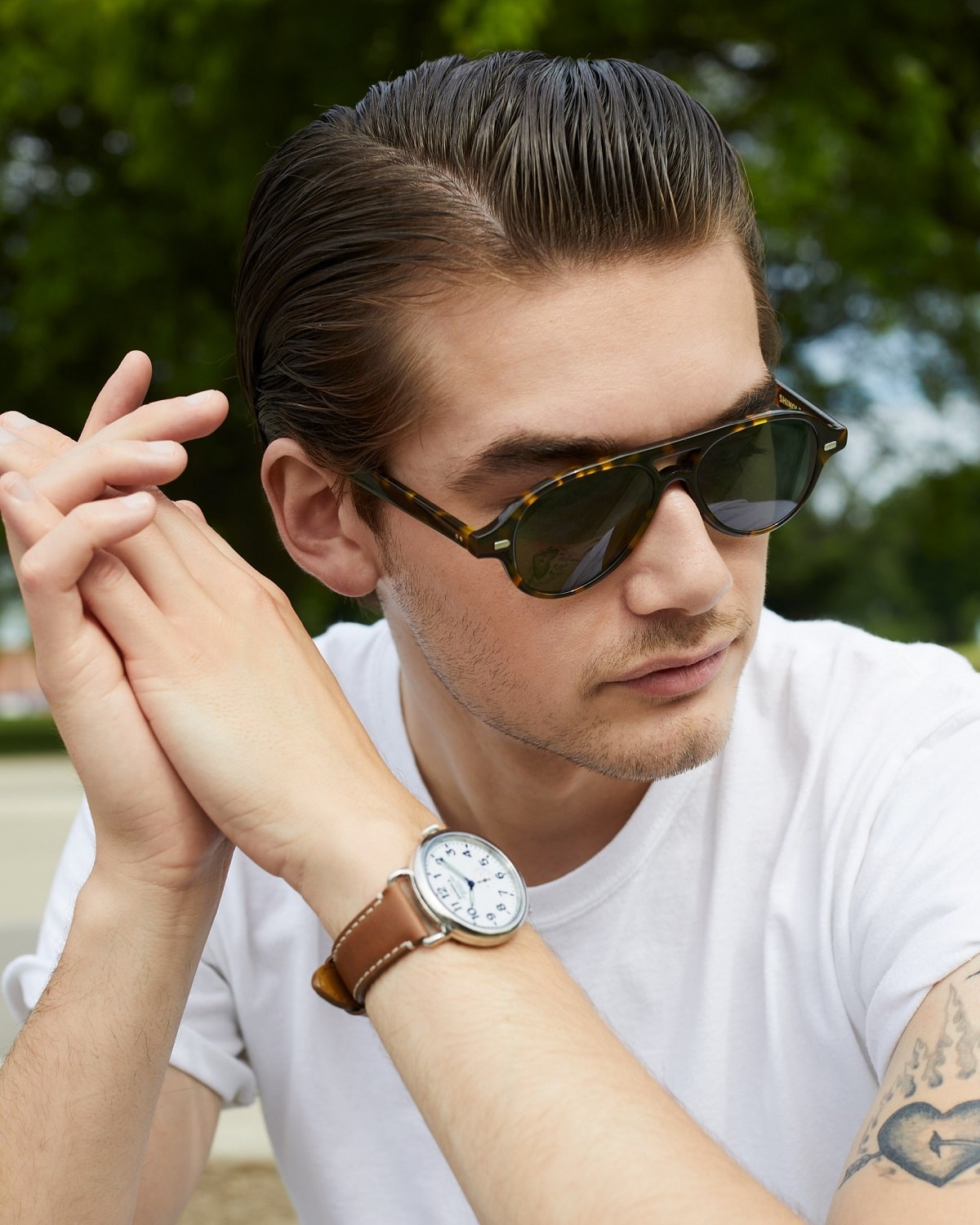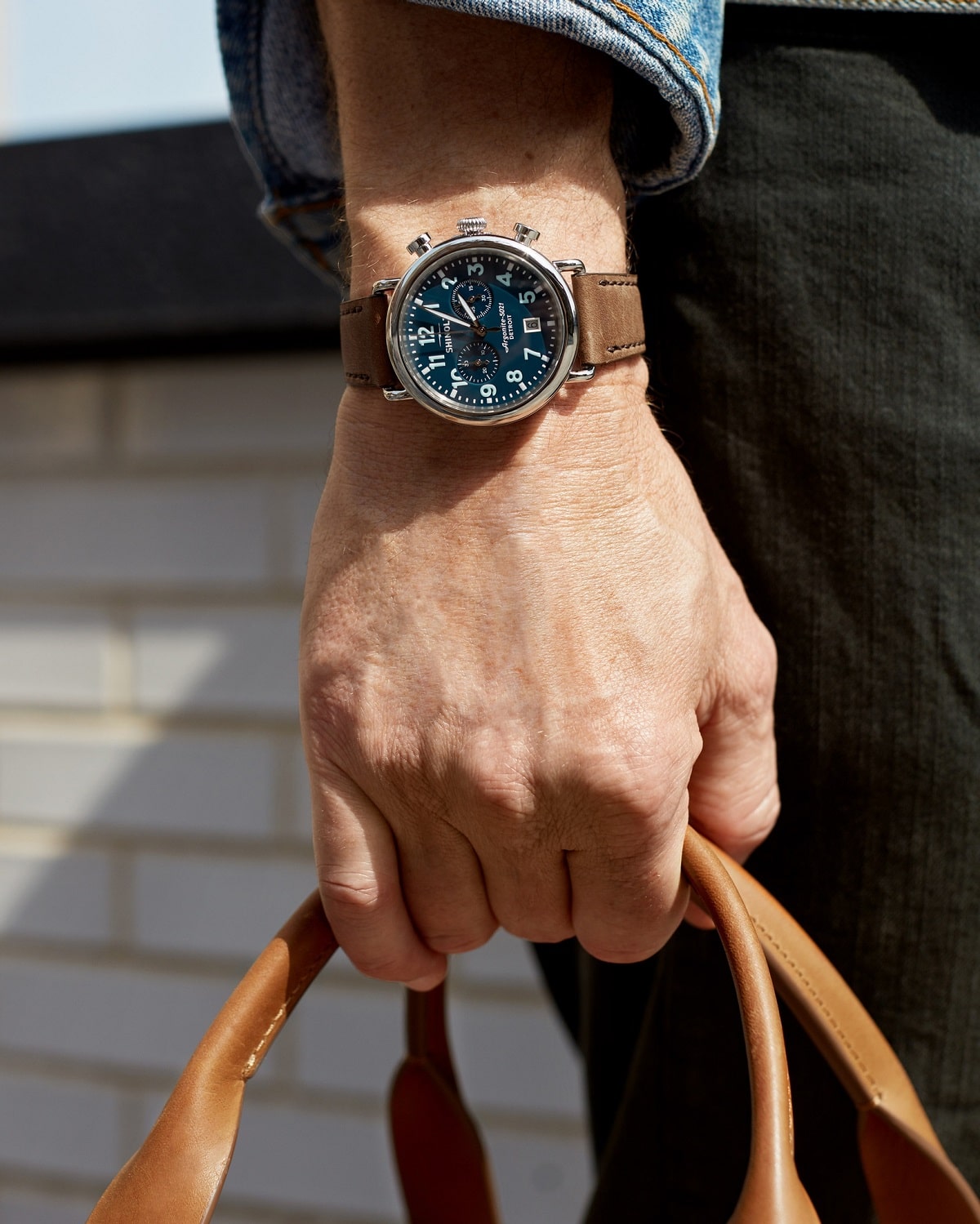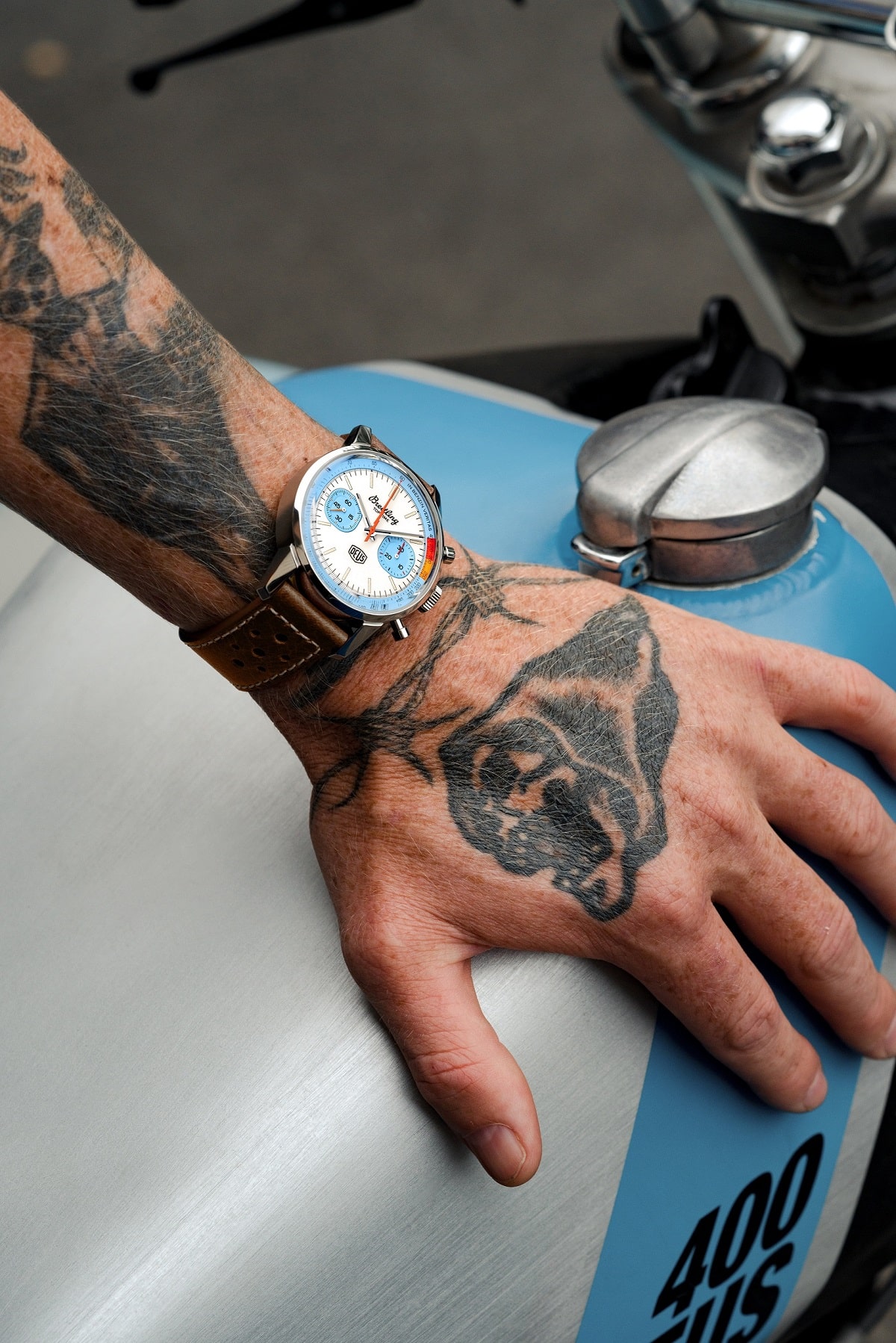1
HOME > Tips & Advice >
HOW TO MATCH A WRISTWATCH TO YOUR CLOTHING
Written by Ivan Yaskey in Tips & Advice on the 5th January 2023

As the scope of men’s accessories continues to expand, wristwatches remain a stalwart. The growing – or plateauing, based on recent reports – luxury watch market fortifies its place as a key status symbol. But, you can ultimately have too much of a good thing. Or, that timepiece you just traded looks sharp – but isn’t right for the rules of the occasion. When it comes to watches and dress codes, you have two general rules to keep in mind. One, coordinate it with the rest of your accessories. This means no mixed black and brown leathers or silver and gold metals – unless the occasion is ultra-casual. Secondly, less often ends up being more: At formal occasions where you’re looking to impress, that slimmer dress watch comes off as less obnoxious and status seeking. Now that we’ve covered the basics, keep the following in mind for coordinating your wristwatch with your attire:
Know Your Types
We’re likely preaching to the choir. Especially if you collect already, you’ve got more than foundational knowledge of the basics. But, if you don’t – or you’re the guy who continues wearing a watch out of habit – get familiar with the following:
- Dress Watches: Don’t be deceived. These might not be the flashiest of the bunch, but they come with an equally high price tag. Going beyond this factor, a few key features define a dress watch: a thin leather band accompanied by a round, white watch face with few to no numerals in a metal case. It’s simple, elegant, and intentionally styled to not draw the eye.
- Dive Watches: Through most of the 20th century, watches helped with calculating time and distance. Dive watches provided these features along with water resistance. Today, these timepieces are no longer practical for this purpose but retain a specific design – a metal band and case with a larger watch face accompanied by proportionally large numerals.
- Racing Watches: Also called a “chrono” for their distinctive timekeeping feature, these watches were used by professional racers through the 1960s. A larger, angled watch face – designed to be easily seen by the wearer – sports large numerals often in contrasting colours for greater visibility. A mix of metal and leather, often with maximalist appeal, distinguishes them from diving watches. More importantly, they’re equipped with a chronograph and tachymeter for tracking time and speed, respectively. Realize that while some models like the Rolex Daytona maintain this classic combination, others veer in a sportier direction, adding smartwatch-esque features like GPS, an altimeter, or heart rate monitor into the mix.
- Pilot Watch: This military-originating timepiece appears like a chronograph albeit in a simpler configuration and often with a luminous watch face.
- Field Watch: Wartimes during the early 20th century transformed the wristwatch from a fashion staple into a streamlined timekeeping essential. The field watch reflects this transition away from the pocket watch. Today, this tactical-to-casual option looks the part with a rugged, often olive-coloured canvas, nylon, or leather strap and a large watch face with easy-to-read numbers.

For Formal Dress Codes
This entails black tie and business formal. The dividing line here is, for black tie affairs, keep your watch simple – a dress watch with a leather band matching your suit and everything else leather you have on. Black oxfords? Make sure your watch has a black band. In this instance, you may want to invest in a watch with interchangeable leather bands. Also, black leather tends to have the upper hand over brown and other colours in terms of formality. However, should the band start to show signs of wear or visible creasing, realize that it’s too informal for the dress code. As far as the watch face is considered, err on the small side, and look for a white or other muted, classic dial with no visible numerals or embellishments and a silver case. Now’s not the time to show off your chronograph. Business formal affords you some freedom. Dress watches are passable – but so are metal dive watches. Picture the Rolexes of the ‘80s, and you’ve got the idea. Here, though, still keep it simple: Match your metals, so no silver-toned watch as you’re sporting a gold belt buckle or similar wedding band. Also, think about edge and embellishments: Ideally, look for something smooth, rather than something angular, which can appear bulky. Because you’re not looking to show off, go with a slimmer diver silhouette. Then, coordinate finish – matte or shiny – if you can. From here, a few jewels on the watch face are acceptable, as are visible tick marks.

For Casual Dress Codes
We’re grouping smart casual and regular casual together, as they share similar attributes. Here, large watch faces with prominent features aren’t frowned upon, and you have your choice of metal, leather, and even textile, assuming it matches whatever you’re wearing. Here, though, racing and dive watches can appear somewhat showy. To lessen a blatant statement of wealth:
- Select a watch in a similar palette as your shirt and trousers.
- Treat the watch as you would any statement jewellery: If it’s going to be the centre of what you’re wearing, avoid putting on anything else loud. As one example, if you’re sporting a colour-blocked racing watch, keep you attire in the neutral- to cool-tone realm.
- Field watches tend to have a more understated appearance than other large-face choices, and often end up as a go-to everyday style.
- If you’re intending to be more active while wearing your watch, make sure it’s sturdy enough for the environment and activity.
- While smartwatches fall within the casual to smart casual sphere, many have yet to accept them as timepieces and, instead, acknowledge them as feature-heavy pedometers. As such, smartwatches tend to only have a place in more active pursuits, or appear as something to show off in a more tech-driven environment. The exception, here, is if a major brand combines its aesthetic with a digital touchscreen interface.

Other Considerations
Outside of dress code:
- Think about watch size and silhouette in proportion to your body and wrist. Chunky, wider styles appear overwhelming, while on someone more muscular, a thinner band may go unseen entirely.
- As already mentioned, coordinate all of your accessories. Assess the metals of buckles, cufflinks, tie bars, your shoes, and any jewellery ahead of time. Take the same approach with leather. Otherwise, it looks like you’re framing your suit or attire with a bunch of random odds and ends.
- Adjust watch face colour to the time of day. Generally, white and off-white tones suit daytime settings, and darker colours, like navy, grey, and black, are more appropriate for evening occasions.
- Realize that most dress watches aren’t water resistant. Should you decide to head to the gym or pool after a day at the office, take off your watch to reduce potential exposure and damage.

Trending
2
3
4
5
6
7
8
9
10










